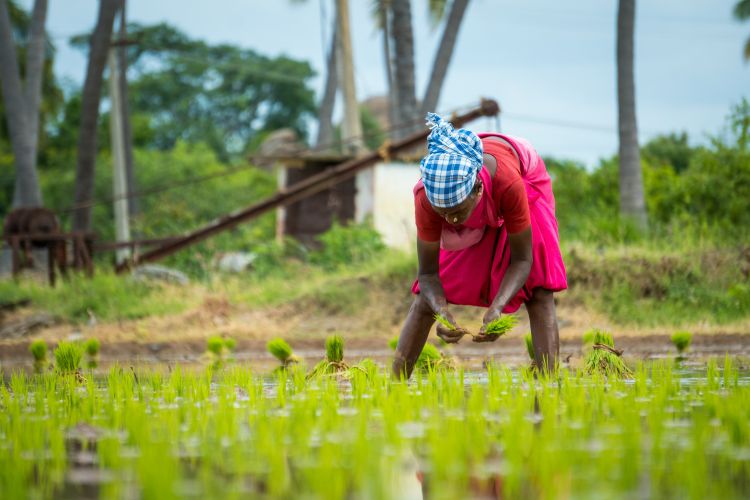
Union Budget 2024-25: Finance Minister Nirmala Sitharaman’s Budget 2024-25 avoided major reforms, but it did provide some relief to two sectors closely watched by economists and analysts. India’s rural sector often misses out on significant growth, and the vast network of Micro, Small, and Medium Enterprises (MSMEs) has not fully recovered from the pandemic’s impacts. These two sectors are crucial for India to become a global economic powerhouse, prompting the Budget to announce multiple initiatives to bolster them.
Following recent electoral setbacks, there were high expectations that these sectors would receive extra attention and a budget boost. Although agriculture and rural development were identified as focus areas, the budget estimates do not show a significant increase in spending from the interim budget projections in February. The government faces pressure to catalyse growth in the rural and agricultural sectors amid strong GDP growth, yet the Budget estimates for rural development remained unchanged from the February estimates.
READ | Union Budget 2024-25: Key takeaways from Nirmala Sitharaman’s speech
Union Budget schemes for MSMEs
MSMEs hoped for government incentives to help them sell products globally. The Budget announced financial and regulatory changes aimed at spurring MSME growth, including a credit guarantee scheme, new assessment models, e-commerce facilitation hubs, and quality testing centres.
The credit guarantee scheme extends term loans for investments in machinery without collateral or third-party guarantees. Sitharaman stated that the scheme would operate on pooling the credit risks of such MSMEs. To ease access to capital, MSMEs can now get loan guarantees of up to Rs 100 crore, even for larger loans, through a dedicated self-funding scheme. The government also announced stress period credit support for these enterprises, ensuring continued access to credit during tough times. Additionally, the Mudra loan limit is doubled to Rs 20 lakh for those with a good repayment history, providing a much-needed financial boost—one of the MSME sector’s chief demands.
Public banks will also assess MSME loan eligibility based on a business’s digital footprint, not just traditional financial statements. Industry insiders believe this move will be a game-changer for smaller businesses without formal accounting, making it easier for them to access funding.
The government plans to expand SIDBI branches in MSME clusters over the next three years. Currently, India has 242 major MSME clusters, and the government plans to open a SIDBI branch in 168 such clusters in the next three years.
One in every five of India’s 1,300 industrial clusters is in food processing, prompting the government to support this industry. The Budget announced financial support for 50 multi-food irradiation units and 100 food safety and quality testing labs to meet the food processing industry’s testing requirements promptly.
Rural Sector and Agriculture
Rural development funding in India has steadily increased since 2019-20, with the allocation for this year at Rs 2.65 lakh crore, over Rs 1 lakh crore more than in 2019-20. Most of this will go towards strengthening rural infrastructure. The Budget launched phase 4 of the Pradhan Mantri Gram Sadak Yojana (PMGSY) to provide all-weather connectivity to 25,000 rural habitations. Despite this expansion, the budget for PMGSY has been slashed by about 37%, from last year’s budget estimate of Rs 19,000 crore to Rs 12,000 crore this year, which is also less than last year’s revised estimate of Rs 17,000 crore.
Another key highlight is the construction of three crore additional houses in rural and urban areas under the PM Awas Yojana.
Rs 1.52 lakh crore has been allocated to the agriculture and allied sectors, aimed at enhancing various aspects of agriculture, with a particular focus on research and development (R&D) and improving supply chains and infrastructure. A major portion of the earmarked funds will be directed towards improving the production, storage, and marketing of pulses and oilseeds, as the government has emphasised its goal of achieving self-reliance in the production of key oilseeds such as mustard, groundnut, sesame, soybean, and sunflower.
While India has sufficient agricultural production, a weak supply chain has hindered farmers’ growth prospects. To address this, the Budget proposes creating large-scale production clusters near major consumption centres and promoting farmer producer organisations (FPOs), cooperatives, and startups to support collection, storage, and marketing efforts.
The government also announced a significant initiative towards developing digital public infrastructure for agriculture. Over the next three years, this project aims to provide comprehensive coverage for farmers and their lands. A digital crop survey for Kharif crops will be conducted in 400 districts this year, combining data from six crore farmers into national registries and streamlining access to agricultural services.
India seeks to emulate the success of Amul for its cooperative sector. To that end, the Finance Minister announced a new national cooperation policy to ensure the systematic and orderly development of the sector. This initiative is expected to spur the rural economy’s growth and create significant employment opportunities.
However, many expectations of the rural sector were unmet. For instance, the Mahatma Gandhi National Rural Employment Guarantee Program (MGNREGA) saw no increase, with the same budget allocation of Rs 86,000 crore as last year’s revised estimate. This remains lower than the Rs 90,800 crore allocated in 2022-23, which was reduced to Rs 60,000 crore in 2023-24.
